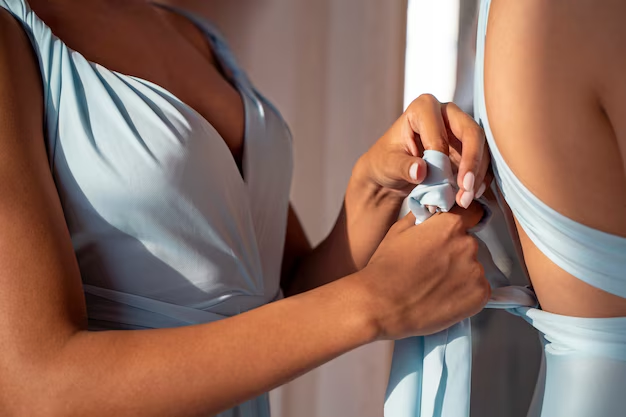Say Goodbye to Chest Acne: Practical Steps for Clearer Skin
Chest acne can be a frustrating and confidence-denting issue for many. It’s not just a problem exclusive to teenagers, but people of all ages can struggle with these pesky spots. If you're looking to clear up your skin and wear your favorite outfits with confidence, you’re in the right place. Let's explore actionable ways to tackle chest acne effectively.
Understanding Chest Acne: Why Does It Occur?
Before jumping into solutions, it's important to understand why chest acne happens in the first place. Similar to facial acne, chest acne occurs when pores become blocked with oil, dead skin cells, and bacteria. But why the chest?
- Sweat and Friction: Tight clothing and synthetic fabrics can trap sweat and bacteria, leading to clogged pores. Friction from clothing or sports gear worsens this condition.
- Hormonal Changes: Hormones can increase oil production, especially during puberty, menstruation, or stress.
- Personal Care Products: Heavy lotions, creams, or shower gels containing comedogenic ingredients can clog pores.
- Diet and Lifestyle: Poor diet, lack of sleep, and stress may exacerbate acne by altering hormone levels.
Effective Ways to Get Rid of Chest Acne
1. Adopt a Cleaner Clothing Routine
Invest in breathable fabrics, like cotton, to reduce moisture and friction. Changing sweaty clothes promptly after exercise and choosing looser-fitting garments can also help minimize breakouts.
2. Enhance Your Shower Routine
- Exfoliate Gently: Regular exfoliation can help keep the pores free from dead skin cells. Opt for gentle scrubs or a soft-bristled brush.
- Use Acne-Fighting Body Washes: Look for products containing salicylic acid or benzoyl peroxide. These ingredients help to tackle bacteria and clear pores.
3. Mindful Skincare Products
Avoid heavy moisturizers or creams on the chest area. Opt for non-comedogenic products—those specifically formulated not to clog pores.
4. Dietary Adjustments
While more research is needed, some studies suggest that dairy and high-glycemic foods (sugary or processed foods) may trigger acne for some individuals. Watching your intake of these foods might be beneficial.
5. Keep Sweat in Check
Sweat is natural, but it can make chest acne worse if not managed. Make it a habit to shower after sweating, whether from heat or exercise. Using a gentle body powder can help absorb excess moisture.
Exploring Lifestyle Changes for Acne-Free Skin
Understanding how lifestyle impacts your skin is crucial for managing chest acne long-term.
Stay Hydrated
Drinking plenty of water helps to keep your skin hydrated and may assist in flushing out toxins.
Prioritize Sleep
Adequate sleep is essential for healthy skin. Aim for 7-9 hours per night to help maintain your body’s hormonal balance.
Manage Stress
Stress doesn’t just affect your mind, it impacts your skin too. Engage in stress-relieving activities like yoga, meditation, or hobbies that you find relaxing.
Do’s and Don’ts of Managing Chest Acne
Do’s:
- Do cleanse regularly with a gentle, non-irritating cleanser.
- Do wear clean clothes and bedding to reduce exposure to acne-causing bacteria.
- Do monitor your diet and see if certain foods trigger your breakouts.
Don’ts:
- Don’t pick or pop acne, as this can lead to scars and spread bacteria.
- Don’t use harsh chemicals that may irritate the skin.
- Don’t ignore a persistent problem; if over-the-counter treatments aren’t effective, consider consulting a dermatologist.
Natural Remedies: Are They Worth Trying?
While there are many natural remedies advertised for acne, their effectiveness can vary. Some people find relief using:
- Tea Tree Oil: Known for its antibacterial properties, it might help reduce inflammation and kill bacteria.
- Aloe Vera: This soothing plant has anti-inflammatory properties that may calm irritated skin.
- Apple Cider Vinegar: Dilute with water and apply with a cotton ball to balance skin pH and fight bacteria.
Use these remedies with caution and discontinue if irritation occurs.
What if Nothing Works? When to Seek Professional Help
If you’ve tried various methods and find your chest acne doesn’t improve, it could be time to consult a dermatologist. They can offer treatments such as:
- Prescription topical treatments
- Oral medications (like antibiotics or hormone therapy)
- Other procedures like chemical peels or laser therapy
Final Words of Encouragement
Managing chest acne can be a process of trial and error, requiring both patience and persistence. Everyone's skin responds differently, so it might take time to find what works best for you.
Quick Takeaways:
- Wear breathable fabrics and change sweaty clothes promptly.
- Use acne-fighting body washes and exfoliate gently.
- Stay hydrated and practice stress-relief techniques.
- Consult a professional if over-the-counter options are ineffective.
By taking these steps, you’re well on your way to clearer, healthier skin, ready to face the world with newfound confidence.
Summary Table: Your Path to Clearer Chest Skin 🌟
| Action | Benefit | Emoji |
|---|---|---|
| Swap to breathable fabrics | Reduces sweat and bacteria buildup | 👕 |
| Adopt gentle exfoliation | Keeps pores clear of dead skin | 🌿 |
| Use non-comedogenic products | Prevents pore-clogging | 🚫 |
| Shower after sweating | Minimizes bacteria and oil | 🚿 |
| Hydrate and manage stress | Promotes overall skin health | 💧🧘♀️ |
| Consult a dermatologist if needed | Provides specialized treatment options | 👩⚕️ |
Taking these practical steps paves the way to not just clearer skin, but a boost in confidence and comfort in your own body. 🌟
